Regardless of your customers’ needs, suppliers offer pillows for every preference. The key is knowing what options are available and how to merchandise them.
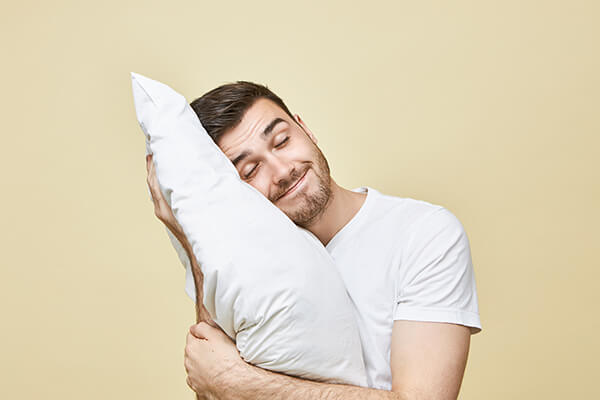
Other than shoes, there is perhaps no other product that consumers are as fussy about as pillows. Finding the right fit and feel is essential or the pillow will wind up relegated to the pile of rejects in the linen closet.
But with the ever-widening range of pillows available from suppliers, bedding retailers should have no trouble meeting consumers’ needs — even multiple needs. Do you have a customer who sleeps on her back, tends to get hot throughout the night and wants to be able to launder her bedding regularly? There are plenty of pillow options for her — and for her sleeping partner, who is a side-sleeping triathlete interested in bedding products that will help his body recover after tough workouts.
“Overall, we see customers expecting more than just comfort from their bedding and want solutions customized to their sleep needs,” says Sarah Bergman, vice president of marketing and product development for PureCare, a sleep accessories specialist based in Phoenix. The company makes a wide range of pillows, from fiber- to foam-filled models, produced in the United States.
And consumers are willing to pay for feature-laden pillows that will help them rest well. “Consumer demand for premium pillow offerings remains strong,” says Jill Johnson, vice president of marketing for the Tempur-Pedic brand, part of Lexington, Kentucky-based Tempur Sealy International Inc. She notes that during the past year,
Tempur-Pedic has seen strong growth in price points from $149 to $199. Tempur-Pedic, an early leader in the premium specialty pillow category, offers three main collections.
Here we’ll look at some of latest technologies and innovations in pillows that you’ll want to consider offering your customers.
This one feels right
Some sleepers like a soft pillow; others firm. And everyone needs a pillow that comfortably cradles their head whether they sleep on their side, stomach, back or a combination of those positions.
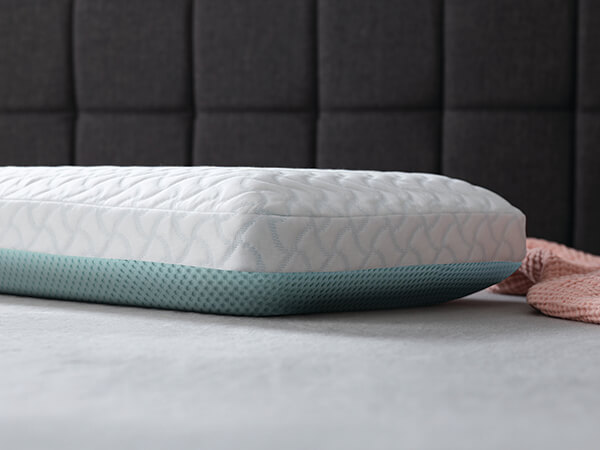
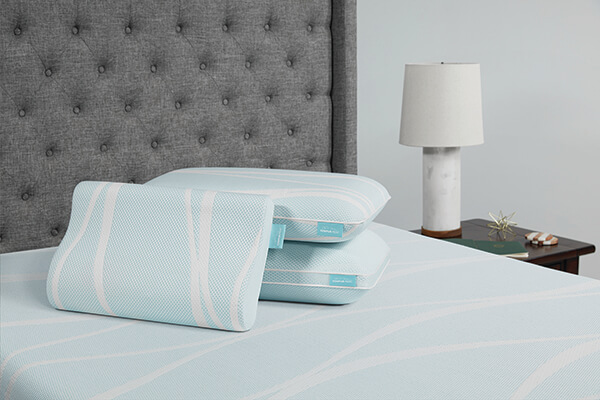
The unique feel of the Tempur-Cloud pillow has made it one of the company’s perennial top sellers, Johnson says. It is designed as a single, solid piece of Tempur material with added support for stomach and back sleepers. “The Tempur material inside the pillow precisely adapts to your head, neck and shoulders. A unique cell structure within our material is activated by the individual characteristics of your body — your weight, shape, temperature and even sleep position. As these elements change throughout the night, our legendary material continues to comfort, support and conform to your body,” Johnson says. “And unlike ordinary pillows, these pillows won’t lose their shape or flatten over time.”
The $79 retail price for a queen-size Tempur-Cloud pillow also “is appealing for many consumers,” Johnson adds, as is the “two for $99” promotion the company often uses in selling the pillow.
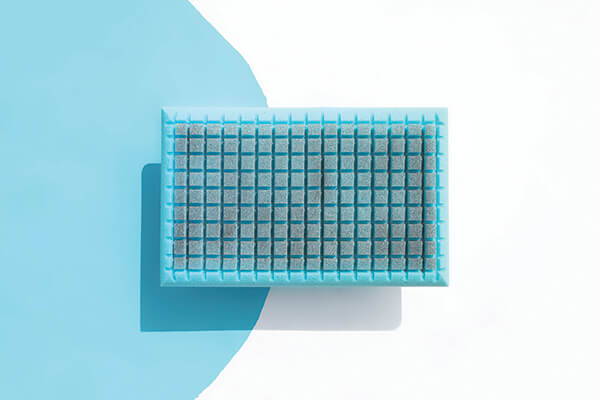
This spring, Blu Sleep is unveiling Surround, a group of specially shaped pillows for side sleepers. “They support your head and neck, and the pillow hugs your shoulders,” says Elizabeth Dell’Accio, president of Blu Sleep, a maker of mattresses and sleep accessories based in Pompano Beach, Florida.
The company specializes in Italian-made, brightly colored, quick-responding foam pillows. Its line includes 15 models in retail price points from $59 to $129 for queen sizes.
“Most consumers that try our pillows become obsessed with how they feel and how they stay comfortable throughout the night,” Dell’Accio says.
So cool
As much as consumers may appreciate the temperature-regulating properties of today’s mattresses, they like them even more in pillows, manufacturers say.
“Technology — particularly, cooling technology — continues to be in demand,” Johnson says. “In fact, Tempur-Pedic research indicates sleeping cooler throughout the night is the No. 1 unmet consumer need in the sleep industry.”
Tempur-Pedic’s Tempur-Breeze pillows ($199), companions to its Tempur-Breeze mattress line, “are expertly engineered and thought-fully designed to provide superior temperature-regulating cooling,” Johnson says. They feature breathable SmartClimate covers for “maximum airflow” and “continuous cool-to-touch comfort throughout the night,” she adds.
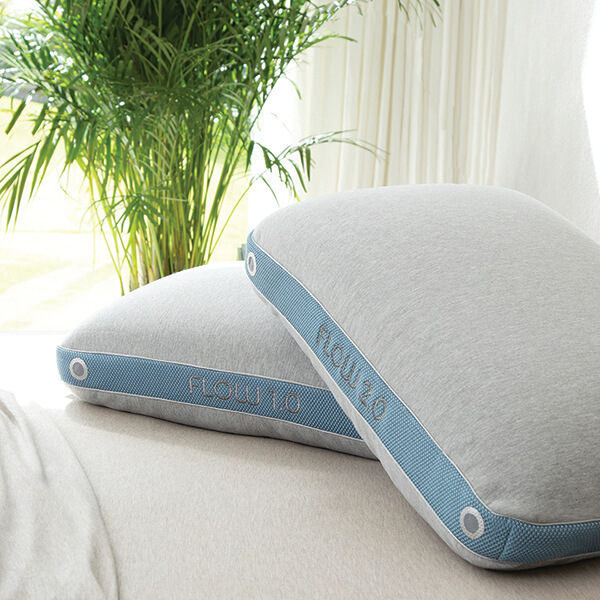
Floating on Air: Bedgear’s newest pillow collection, Flow, is designed for maximum airflow and breathability.
Bedgear’s newest pillow collection, Flow, is all about airflow, as the name indicates. The pillows feature Air-X breathable fabric and air vents to enhance breathability. The elements work together to keep heat from building up. “This pillow is truly breathable inside and out,” says Andrea Antinozzi, director of merchandising for Bedgear, a mattress and sleep accessories producer based in Farmingdale, New York.
The company has several pillow collections, with retail prices typically ranging from $99 to $249. Consistent across the groups is an emphasis on “breathability and clean sleep,” Antinozzi says, with pillows incorporating technologies and constructions that improve airflow and featuring removeable, washable covers.
PureCare recently unveiled a cooling body pillow. “This addition to our lineup gives our retailers a simple option for maternity pillow sales, which just happens to be the top-rated search term for pillows on Amazon,” Bergman says. “Simple things like the cooling story coupled with the complimentary, fitted pillowcase make it a standout product.”
To keep consumers cool and comfortable, Blu Sleep incorporates breathable, ventilated gel foam into its bestselling Ice Gel pillow, which, Dell’Accio notes, was named a top pillow pick by Good Housekeeping for 2021. The company incorporates Toyobo fibers into its “cool and cozy” pillow covers for all-night cooling even after covers are washed.
Multitaskers
Dual-sided pillows that provide two different surfaces (for instance, soft/firm or cool/warm) and adjustable pillows that allow changes to the amount or type of fill give consumers much-appreciated options. Some manufacturers also incorporate special fibers, aromatherapy oils and other materials in their bed pillows to provide additional benefits, such as reducing stress and helping the body recover from activity.
“Consumers continue to seek choice and personalization that best meet their preferences and sleep style/position and so they want options for both profile (low, mid, high) and construction (down, foam, etc.),” Tempur Sealy’s Johnson says. “Being able to select a more personalized solution increases confidence in premium selections for consumers.”
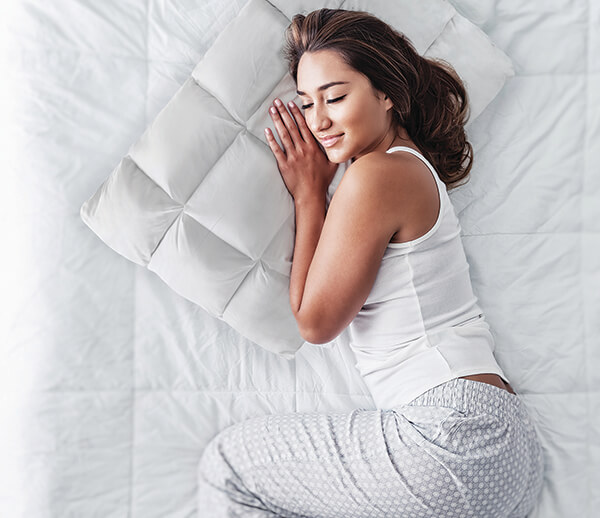
Specialty Sleep: PureCare’s dual-sided SoftCell pillow uses both fiber and foam and has a removable liner so sleepers can adjust the loft.
PureCare’s SoftCell pillow combines fiber and foam in a dual-sided model with “two completely different comfort options,” Bergman says. “The construction also features a removable inner pillow that allows the sleeper to easily adjust the loft based on their unique support needs. This makes the SoftCell design ideal for pairing with adjustable bases.” The pillow retails for about $180 in queen size. Giving consumers even more options, the SoftCell comes with two cover choices — one with cooling properties; one with recovery properties.
Bedgear’s bestselling pillow is the multitasking Storm, Antinozzi says. The dual-chambered pillow ($199) has a softer side and a firmer side and features the company’s Ver-Tex instant-cooling cover, as well as Air-X breathable mesh for improved airflow and cooling. Like other Bedgear pillows, it is available in four heights and, Antinozzi notes, the Storm earned a coveted place on a recent list of “Oprah’s Favorite Things.”
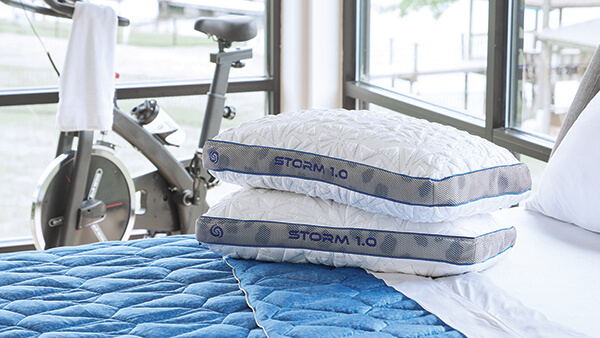
Tempur-Pedic offers a number of multifunctional pillows, including the Adapt ProLo ($149), a low-profile, dual-sided model for side sleepers with conforming “microcushions” of shredded Tempur material on one side and a supportive piece of Tempur material on the other. It’s also available in higher profiles as the Adapt ProMid and Adapt ProHi.
Another dual-sided option, the Tempur-Symphony ($99), is designed to serve all types of sleepers, with a gently arched side for back sleepers and a flatter side for side and stomach sleepers, Johnson says. The company’s Tempur-Down Adjustable Support pillow ($149) combines down with adjustable Tempur-Pedic material inserts that allow consumers to customize the height and firmness.
Blu Sleep incorporates essential oil from the mallow flower into its Aqua Gel pillow, a top seller for the company. The oil is said to have anti-inflammatory properties. And one of Blu Sleep’s newest pillows, the Ceramo ($99), has “bio-ceramic” gel technology said to help the body recover from activity. It comes in a traditional profile and also in a shaped profile with a cutout for side sleepers. “We’ve had an overwhelming response and have expanded our offering to include mattress toppers and a pet bed in three sizes,” Dell’Accio says.
Tips for Selling More Pillows In-Store
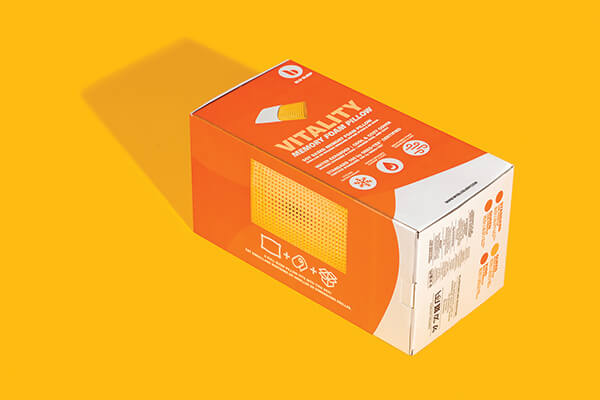
Silent Seller: Pillow makers like Blu Sleep aim to create eye-catching packaging that clearly explains each pillow’s features and benefits.
One of the best ways to increase in-store pillow sales is to offer a pillow fitting for every customer, says Andrea Antinozzi, director of merchandising for Bedgear, a mattress and sleep accessories producer based in Farmingdale, New York.
“We always start asking the customer when they walk into the mattress gallery shopping for a mattress the same question, ‘Have you ever been fit for a pillow?’ ” Antinozzi says. “Most haven’t and it takes only a few minutes to do so with a few questions from Bedgear’s PillowID (quiz).”
Introducing shoppers to your pillow selection early in the mattress-buying process helps them to better understand the role of the pillow in a good night’s sleep, says Sarah Bergman, vice president of marketing and product development for PureCare, a sleep accessories specialist based in Phoenix.
“It’s important that every customer understands how much their pillow impacts their overall comfort throughout the mattress fitting process,” Bergman says. “In the end, the comfort and support that the customer experienced in-store should feel exactly the same once their new mattress and pillows are in their home. You can’t have one without the other.”
“One of the advantages of a brick-and-mortar store is that guests can experience the pillows in person, trying them in coordination with the mattress they will be using it on,” adds Jill Johnson, vice president of marketing for the Tempur-Pedic brand, part of Lexington, Kentucky-based Tempur Sealy International Inc.
Here are five more tips for boosting in-store pillow sales:
1. Curate your selection. Pillow vendors are offering an ever-growing selection of constructions, shapes, profiles and technologies. And you don’t have room for them all. Display the most popular constructions with highly sought-after features like cooling. If customers want something you don’t have, take advantage of suppliers’ drop-shipping services. “Look for opportunities to keep the in-store pillow selection simple and streamlined. A small selection with a few unique, no-brainer step-up options works well for most retailers,” Bergman says. “Then offer a wider pillow variety online and ship them direct from your supplier to the end customer to ease inventory and time burdens.”
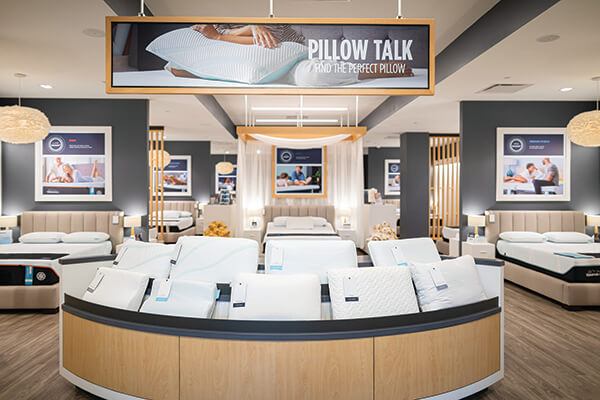
Pillow Power: In its own stores, Tempur-Pedic attractively displays pillows front and center to entice shoppers to try one.
Johnson agrees: “Curated assortments that offer ranges of price points, profiles and technologies ensure customers have choices but also are not overwhelmed with selection so that they can buy with confidence.”
2. Display them properly. “When we think about sleep solutions, we think about them holistically … so at Tempur-Pedic retail stores, pillows are positioned prominently in the front of the store and are merchandised on each mattress, as well,” Johnson says. You can take advantage of ready-made displays from vendors or create your own. The key is to highlight features and benefits and give shoppers a chance to touch and feel their options.
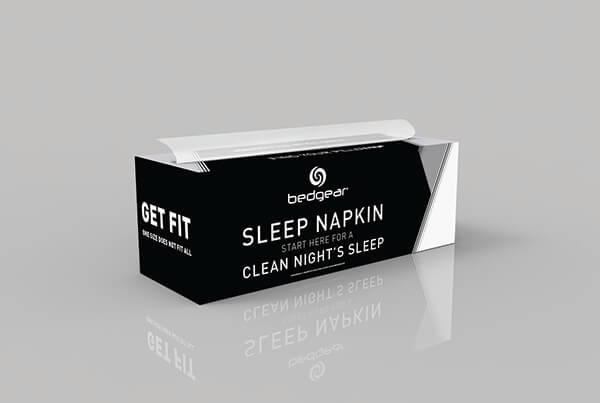
Safety First: Bedgear created its patented disposable Sleep Napkins to give shoppers the confidence to properly test pillows in-store.
3. Make customers feel safe and sanitary. There’s always been a high “ick” factor to the idea of resting your head where countless other shoppers have, and the Covid-19 pandemic has made people even more aware of germs. Provide disposable pillow protectors for shoppers to use as they rest-test pillows and mattresses. Bedgear now offers “patented Sleep Napkins so that the guests can try the pillow on a bed and feel safe and comfortable and not worry about sharing samples with other customers,” Antinozzi says. “Trying a pillow on a bed is much better than hugging it standing up in a plastic bag to select your pillow.”
4. Tout endorsements. Online shoppers are accustomed to relying on customer reviews and testimonials to help guide their buying process. In-store, you can highlight third-party endorsements of specific pillows to boost customer’s confidence in products. “We have implemented sharing reviews and editorial endorsements with our reps to communicate the quality and feedback we receive from editors testing our products,” says Elizabeth Dell’Accio, president of Blu Sleep, a maker of mattresses and sleep accessories based in Pompano Beach, Florida.
5. Take advantage of training programs. Most pillow makers have added online training options to allow retail sales associates to take advantage of training anytime. PureCare, for instance, has created an e-learning platform it calls PureCare University. “This virtual extension of our trainers allows us to stay in front of our retail sales partners and make countless training touchpoints on a daily basis,” Bergman says. Tempur-Pedic’s RSA training “includes how to introduce pillows and how to fit a customer to their right pillow,” Johnson says.
7 Ways to Sell More Pillows Online
When it comes to selling pillows online, a key is to provide as much information to shoppers as possible so that they have confidence narrowing their choices and making a final purchase.
Here are seven specific ways to guide online shoppers through the pillow buying process:
1. Differentiate yourself. “There are thousands of pillows for sale online, so make sure that you are offering your customers pillows with benefits and features that they can’t find elsewhere. Me-too products aren’t enough to move the bottom line,” says Sarah Bergman, vice president of marketing and product development for PureCare, a sleep accessories specialist based in Phoenix.
2. Show them off. “Very good pictures and explanations of the product go a long way,” says Elizabeth Dell’Accio, president of Blu Sleep, a maker of mattresses and sleep accessories based in Pompano Beach, Florida. Your vendors should be able to provide complete pillow descriptions, as well as high-quality photography and videos that show pillows from several angles and also focus on important details.
3. Use reviews as online sales associates. Reviews and testimonials “are key for online” pillow sales, says Andrea Antinozzi, director of merchandising for Bedgear, a mattress and sleep accessories producer based in Farmingdale, New York. Incorporate general reviews about your product lines and customer service throughout your e-commerce site and place testimonials about specific pillows on the related product pages. “It is important to provide easy access to ratings and reviews as this helps consumers navigate the selection and build confidence in their choice,” says Jill Johnson, vice president of marketing for the Tempur-Pedic brand, part of Lexington, Kentucky-based Tempur Sealy International Inc.
4. Tout third-party endorsements. Shoppers browsing online are gathering information, whether they end up buying through e-commerce or heading to a store. If you carry pillows that have been lauded by third parties, highlight those endorsements. “We have implemented a press program that has included publications like Good Housekeeping, Women’s Health, Forbes and others to weigh in on our products in relation to other products on the market,” Dell’Accio says. “We have received an amazing response, and this type of press helps our retailers build value when communicating the quality of our products to the consumer.”
5. Encourage quiz taking. Bedgear uses a PillowID quiz on its website to help consumers find the right pillow size and type. Chat features also can help shoppers narrow their choices. Such tools give online shoppers the personalized recommendations they are seeking.
6. Make recommendations. As online browsers search for mattresses, use pop-ups and other tools to suggest pillows that will enhance the features of those mattresses. You also can bundle mattress purchases with pillows to boost online sales.
7. Make returns easy. Many mattress retailers work hard to avoid product returns, priding themselves on helping customers select the best products for them the first time. But people are picky about pillows, and making it easy for them to return a pillow that isn’t the right fit will give them more confidence to buy in the first place. “Make your simple, hassle-free returns policy very clear,” Bergman says. “This is especially important for tactile/comfort purchases like pillows that vary widely in firmness, loft and support.”

